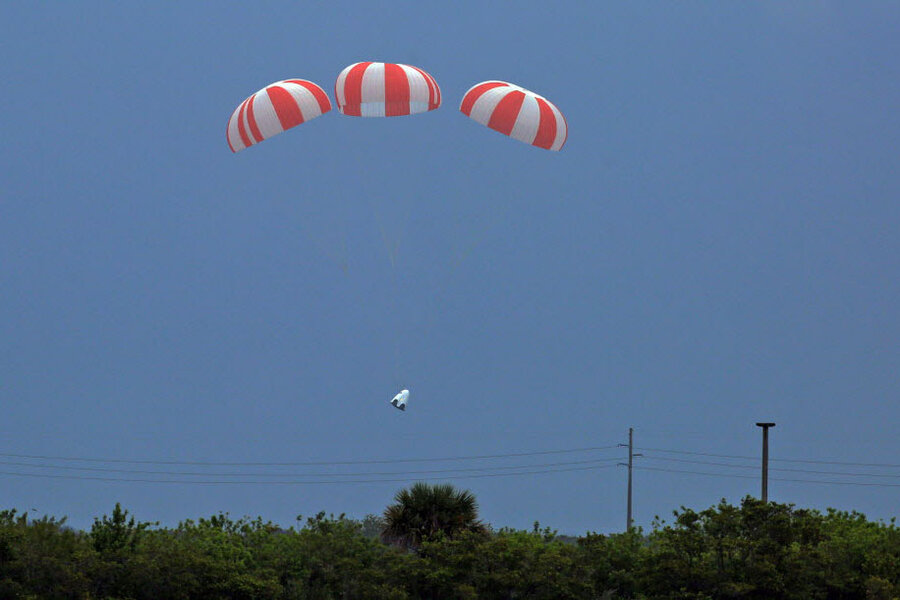SpaceX successfully ejects crew capsule: Did space flight just get safer?
Loading...
In a test lasting just under 100 seconds, Space Exploration Technologies Corp. appears to have demonstrated that its crew capsule – one of two NASA is banking on to carry American astronauts to and from the International Space Station – can vault clear of danger on a launch pad.
The company plans to return the capsule to its facility in Texas for a thorough analysis of the results, but each stage of the brief flight appeared to go as planned.
The next step, coming later this year, is a test of the capsule's ability to kick free of a rocket during the most stressful part of its ascent.
NASA's goal is to have two companies, SpaceX and The Boeing Company, ready to ferry astronauts in 2017. The move would end the United States' dependence on Russia for astronaut transportation, reliance that came with the end of the space shuttle program in 2011.
In many ways, the SpaceX test is a legacy of the space-shuttle program, too. The lesson learned from the shuttle era came at the ultimate cost, the loss of the space shuttle Challenger and its seven-member crew shortly after launch in 1986.
NASA thought it could design a spaceship that didn't need a system for protecting astronauts from catastrophic events that could occur during this critical phase of a mission, notes Jon Cowart, NASA's liaison with SpaceX on the company's commercial-crew effort.
"As physics and nature will sometimes do, they taught us a lesson that maybe you should not go do that," he said during a pre-test briefing.
Wednesday's test, from a launch pad at the Cape Canaveral Air Force Station on Florida's east coast, involved a Dragon capsule with eight engines built into its sides. The capsule was perched atop a cargo "trunk" the capsule carries with it. It was laden with instruments to measure vibration, noise levels, G-forces, and a range of other traits that would affect astronauts inside. It also carried an instrumented test dummy to serve as a stand-in for an astronaut.
For six seconds, the engine vaulted the capsule and trunk off the pad and out toward the Atlantic Ocean. By the time the engine shut off, the capsule was moving at between 330 and 400 miles an hour.
At the highest point in the capsule's trajectory, the trunk separated, and a short time later the capsule's two-step parachute system deployed, lowering the capsule into the water about 1 minutes and 38 seconds after launch.
This was the first time SpaceX had tested the system with all eight of the capsule's engines operating. Unlike the escape engine NASA mounted on the noses of the Mercury and Apollo capsules, which had to be jettisoned during ascent, Dragons engines can be used throughout an ascent and into orbit. Eventually, the company hopes to use the engine for landing crews near their launch sites.
Today's test focused on moving astronauts clear of any impending catastrophe on the launch pad. This summer, SpaceX is planning an in-flight abort test, to be launched from Vandenberg Air Force Base in California.
It's a more demanding test because the capsule will try to flee a rocket in the face of an enormous build-up of air pressure ahead of the craft as it ascends. That pressure depends on the speed of the rocket and the density of the atmosphere. The atmosphere grows less dense with increasing height. But a rocket moves through that increasingly thin air at rapidly increasing speeds.
At roughly eight miles up, a rocket's speed and the air's density conspire to present the greatest amount of air pressure the rocket will encounter as it rises through the atmosphere. Not only does an escape system have to overcome that pressure. It also has to overcome turbulence that would try to suck an escaping capsule back toward the rocket, Mr. Cowart explained.








